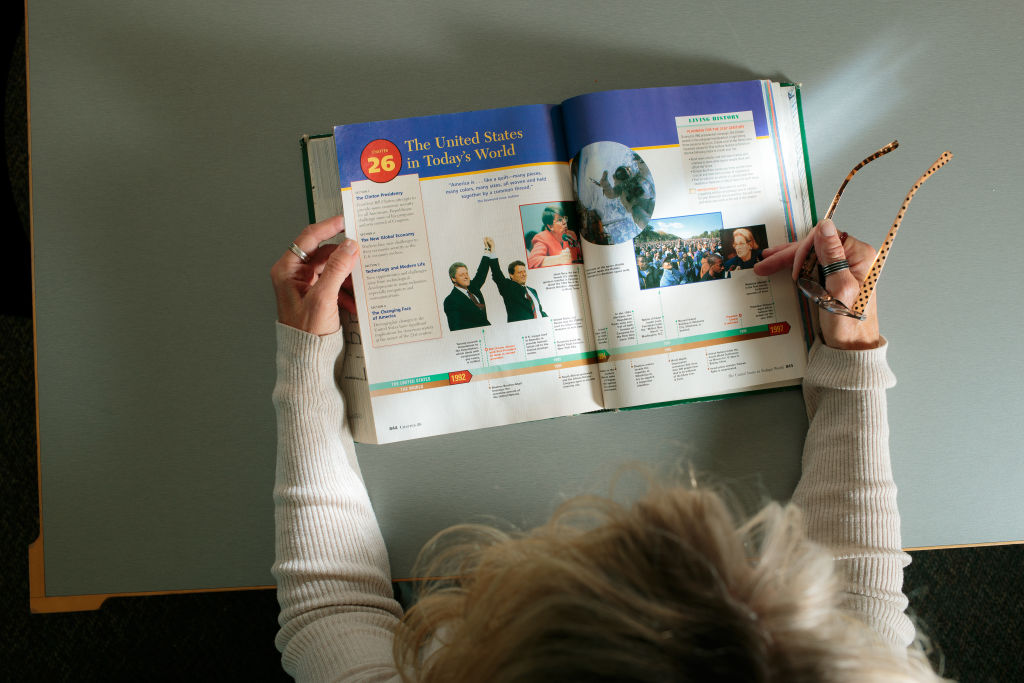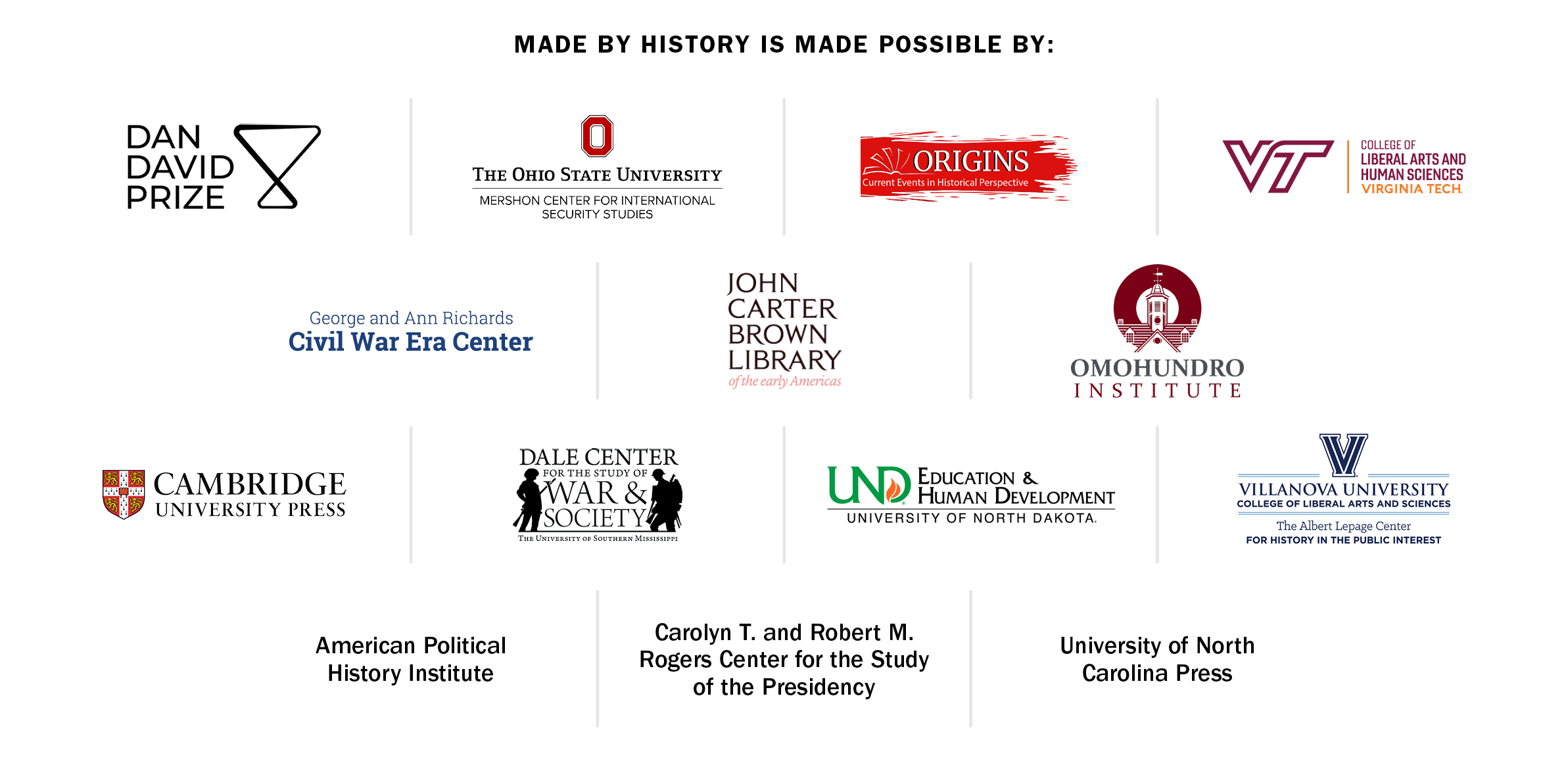
The teaching of history has become a flashpoint in the culture wars. But while the battle is fierce, it’s not new. An earlier round in the conflict in the 1920s — over the teaching of the American Revolution — indicates that it will be crucial for historians to weigh in loudly and forcefully during the current debate. That will give them the space to continue to teach the most accurate, up-to-date version of U.S. History and prevent forces that fundamentally don’t understand the job of historians from shaping what American children learn about the past.
In the late 19th century, the writing of American history was dominated by good writers who were not trained historians. They idealized the Founders and presented the American Revolution as heroic and fully justified.
After 1900, the writing of history shifted to professionals trained in recently established history Ph.D. programs. They replaced the one-sided, simplistic interpretation of the Revolution with discussion of the complexities behind the revolt.
Accustomed to the comforting pre-1900 hagiography, critics — including newspaper columnists, politicians, and patriotic organizations — considered the new interpretation an affront. In the early 1920s, they took to the attack against leading textbooks. Critics decried how the historian-authors questioned the motives of revolutionary leaders as well as their claims against British tyranny. The attacks resonated with much of the public in the wake of the emphasis on “100% Americanism” during World War I and the post-war “Red Scare.”
In 1921-1922, Charles Grant Miller, a columnist with the Chicago Herald and Examiner wrote a series of columns that targeted eight textbooks for allegedly unpatriotic, pro-British presentations of the Revolution. The Herald and Examiner was owned by newspaper magnate William Randolph Hearst and other papers in the Hearst chain reprinted the columns. They were also edited and printed as a pamphlet. Other newspapers reported on Miller’s allegations.
As the furor grew, anxious Americans tuned in to what their children were learning. New York, Chicago, and other cities began investigating the history texts used in their schools. School boards and citizens’ committees started hunting for pro-British, “unpatriotic” interpretations of the Revolution. Patriotic groups also joined the fray. The campaign was, in the words of historian Joseph Moreau, a “revolt against the professors” who were peddling “Anglo-Saxonism.”
Read More: Why Laws Targeting Critical Race Theory Would Also Prevent Me From Teaching World War II
By 1923, a dozen popular texts were on at least one list of suspect books.
The public outrage prompted state legislatures to weigh in. A 1923 Oregon statute required school officials to buy only books that “adequately stress the services rendered and the sacrifices made by the founders of the Republic, which shall inculcate love for and loyalty to our country.” Wisconsin passed a similar law while other states adopted less sweeping legislation. Even some states that didn’t pass new laws, like New York and California, came close.
The textbook reports issued by investigating groups and the laws themselves stopped just short of banning specific books or advocating for it, but they did lay out criteria for schools to follow in adopting history textbooks. Educators began using the discretion recommended in the textbook reports or mandated by the new laws to select history books.
The uproar caught historians off guard.
They had never been attacked in such a broad way like this. It forced the profession to appeal to the public, explaining just what it was that historians did, why it was important, why they needed independence, and why objectivity mattered so much. Historians like Charles H. Ward and Claude Van Tyne wrote letters to the editor and op-ed pieces defending the work under attack and asserting that critics had cherry-picked passages, pulled things out of context, and distorted books’ messages.
The American Historical Association took the lead in the fight with strong public resolution in 1923 denouncing “agitation” and “propaganda” by irresponsible newspapers and politicians. “Attempts, however well meant, to foster national arrogance and boastfulness and indiscriminate worship of national ‘heroes’ can only tend to promote a harmful pseudo-patriotism,” said the statement. The assertion that thousands of school teachers and school officials are “so stupid or disloyal” that they would give students treasonable books is “inherently and obviously absurd.” The AHA’s resolve steeled historians and educators and got a good deal of press attention.
In 1923, Pulitzer Prize-winning professor James Truslow Adams took to the Atlantic Monthly to defend the texts. He argued that historians were seeking truth and balance and took the forefathers off their pedestals to present them accurately as “living, struggling men.”
Three years later, Smith College historian Harold U. Faulkner accused critics of peddling “the old, moth-eaten, discredited and dangerous ‘nationalistic interpretation of history.’”
Even so, a few historians revised their textbooks to eliminate errors or to clarify points that the critics had misinterpreted or misrepresented. Some just stated their interpretations more directly.
David S. Muzzey’s 1920 book An American History had made several critics’ lists for explaining that “there were two opinions as to colonial rights and British oppression.” This assertion about the complexity of issues and motivations leading up to the Revolution made it a lightning rod for critics.
In 1925, Muzzey issued a revised edition. The Revolution was “an armed protest against the invasion of the British Parliament of rights long cherished by the American colonies,” the new book said, leaving no doubt. The new edition concluded that “the separation” owed “chiefly to the conduct of King George III” — including promoting ministers who favored confrontation, pressuring Parliament for coercive acts, refusing to compromise, and “ignoring impassioned warnings” from American patriots. Gone was the complexity of the 1920 edition.
Despite the revisions to books, several Hearst newspapers and a few independent papers continued to stoke the fury. But many others soon began opposing text censorship. Their editorial comments echoed what historians were saying about their role and need for independence.
“Is the truth to be suppressed just because it happens to be unpleasant to recall and discreditable to some times and some people?” asked a 1925 Washington Post editorial. The public was tired of hearing historians’ critics claim that “history is something that can be cut and shaped to suit the purposes of the moment," said influential columnist Walter Lippman in his 1928 book American Inquisitors.
Read More: How Ron DeSantis Could Wind Up Dictating Your Kids’ Textbooks
Dixon Ryan Fox, president of the New York State Historical Association, provided a final assessment in an essay entitled “Americanizing American History.” "[P]atriotism is insistently prescribed as an ingredient of history teaching in many countries," he noted, and the attack on historians had been intended to force that in the U.S. He argued, however, that, thanks to lax enforcement of new laws and fading public attention to the issue, critics had only succeeded in compelling historians to make changes that they should have made (and probably would have made) anyway. But Fox warned the attack showed that “propagandist societies or politicians anxious to capture the votes of groups with special interests” could disrupt and discredit historians’ work.
Fox was right. The question of who controls history in the schools would appear periodically over the next century, including in our own day.
The struggles of a century ago show that historians need to keep explaining their work and role to the public. That includes defending their right and obligation to present research-based, objective history — and to rethink historical understandings in the light of new evidence, insights, and perspectives. Such communication is crucial to enabling historians to present young Americans with the best understanding of our past, including its good chapters, its bad chapters, and everything in between.

Failing to make an affirmative case for good history, by contrast, risks politicians, self-designated patriots, interest groups, and pundits discrediting historians, sidelining objective history, and putting history to use to further their own agendas.
Bruce W. Dearstyne has taught history at SUNY Albany, SUNY Potsdam, and Russell Sage College. He was also a professor at the University of Maryland College of Information Studies. His most recent books are The Spirit of New York: Defining Events in the Empire State's History(2nd ed., 2022); The Crucible of Public Policy: New York Courts in the Progressive Era (2022); and Progressive New York: Change and Reform in the Empire State, 1900-1920 – A Reader (2024).
Made by History takes readers beyond the headlines with articles written and edited by professional historians. Learn more about Made by History at TIME here. Opinions expressed do not necessarily reflect the views of TIME editors.
More Must-Reads From TIME
- The 100 Most Influential People of 2024
- Coco Gauff Is Playing for Herself Now
- Scenes From Pro-Palestinian Encampments Across U.S. Universities
- 6 Compliments That Land Every Time
- If You're Dating Right Now , You're Brave: Column
- The AI That Could Heal a Divided Internet
- Fallout Is a Brilliant Model for the Future of Video Game Adaptations
- Want Weekly Recs on What to Watch, Read, and More? Sign Up for Worth Your Time
Write to Bruce W. Dearstyne / Made by History at madebyhistory@time.com
